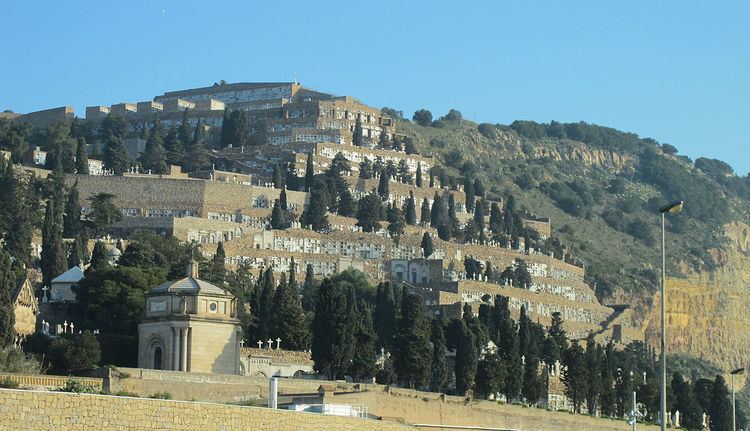Established 1883 Size 57 acres (23 ha) Phone +34 934 84 19 99 | Type Public Founded 1883 | |
 | ||
Owned by Cementiris de Barcelona S.A. Hours Open today · 8AM–6PMSaturday8AM–6PMSunday(Father's Day)8AM–6PMHours might differMonday8AM–6PMTuesday8AM–6PMWednesday8AM–6PMThursday8AM–6PMFriday8AM–6PM Similar | ||
Montju c cemetery
Montjuïc Cemetery, known in Catalan as Cementiri del Sud-oest or Cementiri de Montjuïc, is located on one of the rocky slopes of Montjuïc hill in Barcelona.
Contents
- Montju c cemetery
- Paseo por el cementerio de montju c en barcelona walking through the montju c cemetery
- History
- Monument design
- References
Paseo por el cementerio de montju c en barcelona walking through the montju c cemetery
History
It was opened on 17 March 1883 by the city of Barcelona as its main cemetery, supplanting the older cemetery at Poblenou in the east. It now contains over one million burials and cremation ashes in 150,000 plots, niches and mausolea and is operated by Cementiris de Barcelona S.A.
The city became heavily industrialised during the 19th century and its economic growth led Barcelona becoming the centre of the Principality of Catalonia and a major city of Spain. The growth in population led to an increased demand for burial facilities, and a location was chosen on the slopes of Montjuïc, away from the pressures of housing development. The steep slopes of the hillside give Montjuïc its special character, with winding paths and terraced niches looking seawards over the harbour.
The cemetery contains one Commonwealth war grave, British Army Private Charles Hill (d. 1941) of the Queen's Own Cameron Highlanders who died during World War II.
Monument design
The timing of the cemetery and its memorials coincided with several artistic and design movements; its early monuments are inspired by classic and Gothic styles, while those of the Fin de siècle exhibit the influence of the Art-Nouveau design movement. In Catalonia that style developed into Modernisme, as it was known in the Catalan language.
